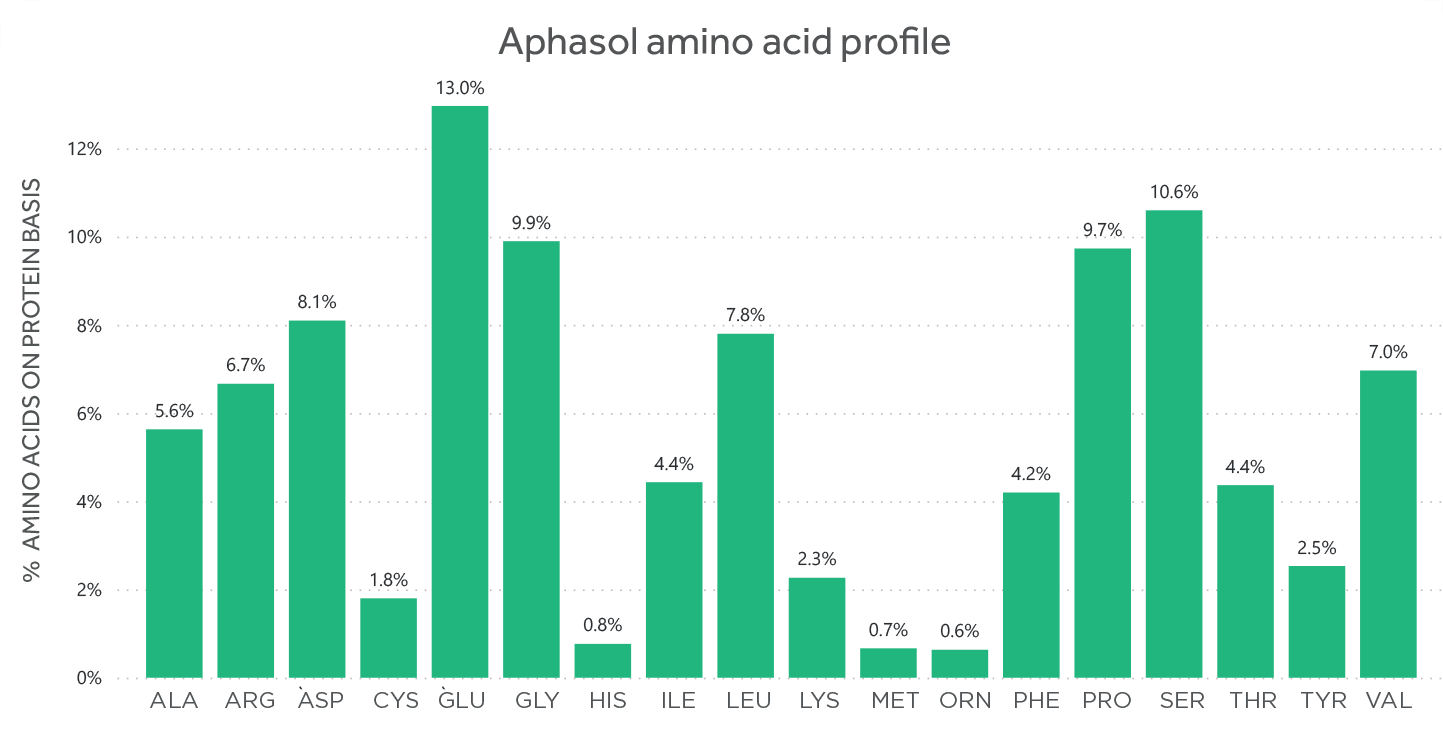What are biostimulants ?
A biostimulant contains substances or micro-organisms whose function when applied to plants is to stimulate the natural processes in plants.
Biostimulants are typically designed to enhance nutrient uptake, nutrient efficiency, tolerance to abiotic stress, and crop quality. Different biostimulants will have different modes of action, depending on the active ingredients involved, but they all have in common that they affect the plant’s metabolism is some way. The difference with fertilisers is that the mode of action of biostimulants is independent of their nutrient content.
Amino acid biostimulants like APHASOL are one type of biostimulant, next to seaweed extracts, humic and fulvic acids, microbial substances and others. In what follows, we explain why amino acid biostimulants deserve a central role in the future of agriculture.

Why apply amino acid biostimulants ?
Contrary to humans who depend on food for their uptake of amino acids, plants can synthesize amino acids themselves, based on the specific stage of growth, nutrient demand, stress, etc. But making amino acids requires a lot of energy from the plant. Energy which, especially in moments of stress, is then no longer available for other key functions. When stressed, plants might even break down already build proteins (in fact cannibalising itself) to make available the needed amino acids.
Making amino acids also takes time. Raw materials to make amino acids must be available to the plant. The conversion in the soil by bacteria of NH4+ to NO3- (required for root uptake by the plant) takes time. As does the conversion in the plant of NO3- back to NH4+ and then to amino acids.
In short: Applying additional amino acids biostimulants is a good strategy to make sure a plant has enough in moments of need.
Foliar application of APHASOL amino acids delivers the amino acids and peptides directly to the plant. After absorption, the peptides and amino acids can be directly incorporated in essential pathways or can act as prominent signal molecules. This saves the plant time and energy, supporting different metabolic processes, especially in moments of stress.
What makes Aphasol unique ?
Well… different things, and we will explain the technical details in different blog items to come. Here are just the highlights:
- Thanks to its specific source material, APHASOL has a unique and very well balanced amino acid profile, contrary to many other products on the market with one or just a few dominant amino acids. This results in a very broad applicability, both in terms of functionality as crop type.
- APHASOL has a high degree of free amino acids and low-molecular weight peptides which allows for easy uptake by the plant leaf stomata and tissues. Different amino acid producers have very varying definitions of “free amino acids”
- APHASOL contains primarily L-form amino acids. which are more readily available to plants than their D-form counterparts. This high concentration is achieved using specific enzymes and working at low temperatures during the different hydrolysis process steps. This keeps racemisation of free amino acids to a minimum, unlike chemical hydrolysis.
- APHASOL is certified for use in organic agriculture.

Registered amino acid biostimulant
Our products meet the highest standards of quality and safety. Aphasol is registered as an amino acid biostimulant by the Belgian federal government and, based on the mutual recognition principle, registered in several European countries.
Suitable for organic farming
Aphasol ECO (the organic variant of Aphasol) is also allowed in organic farming in accordance with Regulations (EU) 2018/848 and 2021/1165. Recognition and control is done by TÜV Nord Integra.

